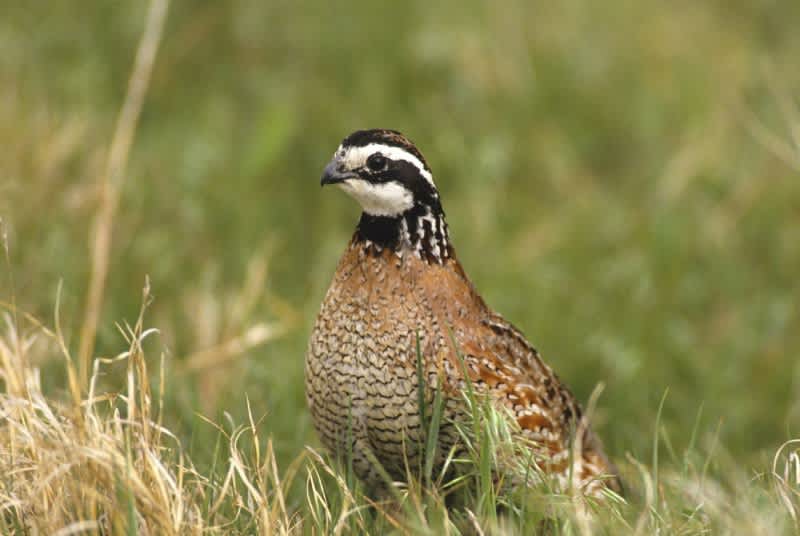Progress Towards Preservation: The National Bobwhite Conservation Initiative
Josh Wolfe 12.12.13

I’ve written on quail hunting very, very little in my time as an outdoor writer. Not to say that I’ve haven’t followed capable bird dogs from dawn to dusk because I have; even when I knew the birds were rather nonexistent. And it was never for reasons of wanting to actually kill quail, rather than have an excuse to be out-of-doors, feel the weight of that old shotgun in my hands, and for the purity with which a good dog goes about his business—doing what he recognizes as neither right nor wrong, but altogether natural.
But I’m not here today to tell you about a setter I once knew or the times I hunted wild birds—the good ol’ days, we all like to call them—with my dad, which happened in only a snapshot or two of my life nearly 20 years ago. When I do finally get around what I’m trying to shed some light on, the National Bobwhite Conservation Initiative (NBCI), it is only done with good intentions and the conservationist’s cap upon my head. I know there are many organizations working for the good of Mr. Bob, this just happens to be the one I’ve had the pleasure to get to know over the last few months.
The National Bobwhite Conservation Initiative is a unified effort by 25 state fish and wildlife agencies, various conservation organizations, and research institution partners (all of which fall under the umbrella of the National Bobwhite Committee) that seek to restore wild quail in the United States. The first such effort, in 2002, was a paper-based plan by the Southeastern Quail Study Group under the umbrella of the Southeastern Association of Fish and Wildlife Agencies. That plan, termed the Northern Bobwhite Conservation Initiative, attracted considerable attention around the country, including that of the other states in the bobwhite quail range. The result was a broad expansion of the effort and a revision of the plan (and the Southeastern Quail Study Group itself, now the National Bobwhite Technical Committee).
Today, NBCI is a multi-faceted initiative characterized by three key elements:
- An easily updated, online strategic plan.
- A massive and easily updated online geographic information system (GIS)-based conservation tool to help state biologists and other conservation planners identify and achieve individual state objectives within the overall national strategy (more than 600 biologists within the bobwhite’s range participated in building this conservation tool).
- A small team of specialists dedicated to range-wide, policy-level efforts to bolster respective state step-down strategies.
Even with quail facing so many adversaries, the population’s downward skid may be coming to a stammering halt as groups like NBCI use science, public funding, and other resources to their advantage.
“Bobwhite restoration is unlike any species restoration that’s been attempted,” said Don McKenzie, NBCI’s Director. “Deer, turkey, and elk were relatively simple and straightforward. Habitat existed and we moved animals there. Much like waterfowl restoration, bobwhite restoration is a habitat issue. Bobwhites didn’t disappear overnight and they won’t recover that way either, which means it’s a multi-year challenge requiring a long-term commitment. This is the first critical step in assuring that the bobwhite restoration effort has reliable funding to continue long-term.”
Other organizations such as the Bobwhite Foundation and Park Cities Quail (PCQ) are supporting and investing in NBCI’s efforts. The Dallas-based, non-profit PCQ has awarded NBCI $75,000 to support its efforts to educate federal agriculture policymakers in the nation’s capital regarding farm policy impacts on bobwhites and other species. These policies are made and implemented using our tax dollars and having a powerful influence in Washington, DC greatly affects our country’s wildlife and its habitat.
While most of my conservation effort has been put toward deer and turkey, I think it’s time I start remembering the birds of my youth. Before I ever heard that first gobble or watched a big buck tromp through the woods, it was a scattering covey that set my blood to boiling. Maybe we can all do a bit more to ensure the bobwhite, at the very least, gets another chance.
For more information on the National Bobwhite Conservation Initiative, visit www.bringbackbobwhites.org. I’m not saying they are doing a better or worse job than anyone else, but it would be a good place to start.

